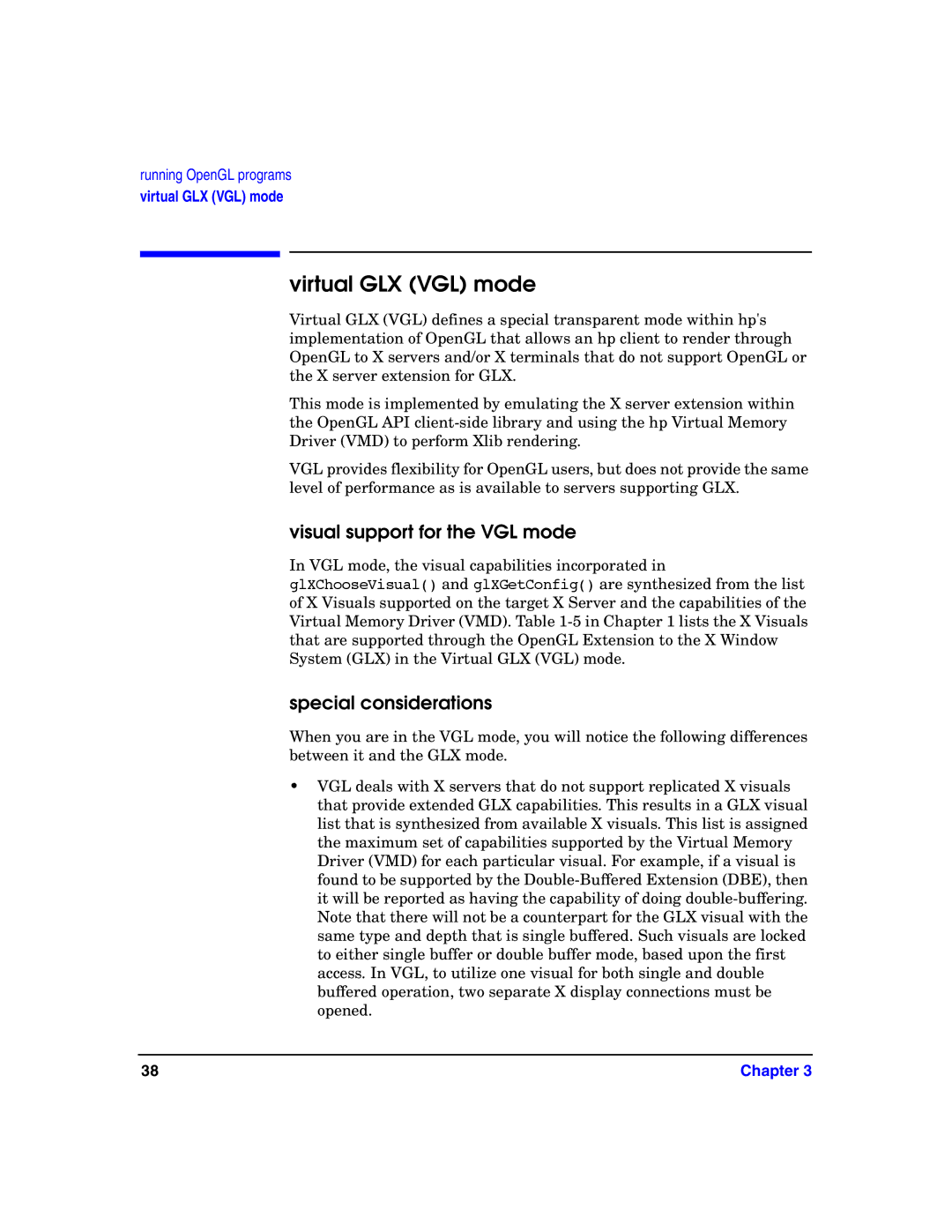
running OpenGL programs
virtual GLX (VGL) mode
virtual GLX (VGL) mode
Virtual GLX (VGL) defines a special transparent mode within hp's implementation of OpenGL that allows an hp client to render through OpenGL to X servers and/or X terminals that do not support OpenGL or the X server extension for GLX.
This mode is implemented by emulating the X server extension within the OpenGL API
VGL provides flexibility for OpenGL users, but does not provide the same level of performance as is available to servers supporting GLX.
visual support for the VGL mode
In VGL mode, the visual capabilities incorporated in glXChooseVisual() and glXGetConfig() are synthesized from the list of X Visuals supported on the target X Server and the capabilities of the Virtual Memory Driver (VMD). Table
special considerations
When you are in the VGL mode, you will notice the following differences between it and the GLX mode.
•VGL deals with X servers that do not support replicated X visuals that provide extended GLX capabilities. This results in a GLX visual list that is synthesized from available X visuals. This list is assigned the maximum set of capabilities supported by the Virtual Memory Driver (VMD) for each particular visual. For example, if a visual is found to be supported by the
38 | Chapter 3 |
